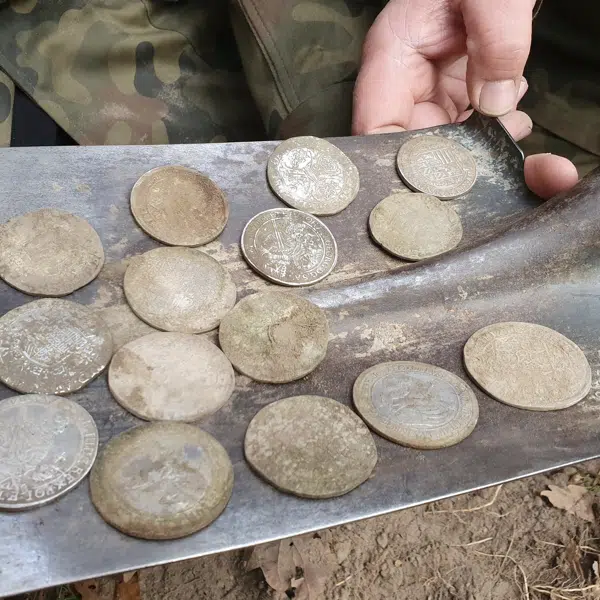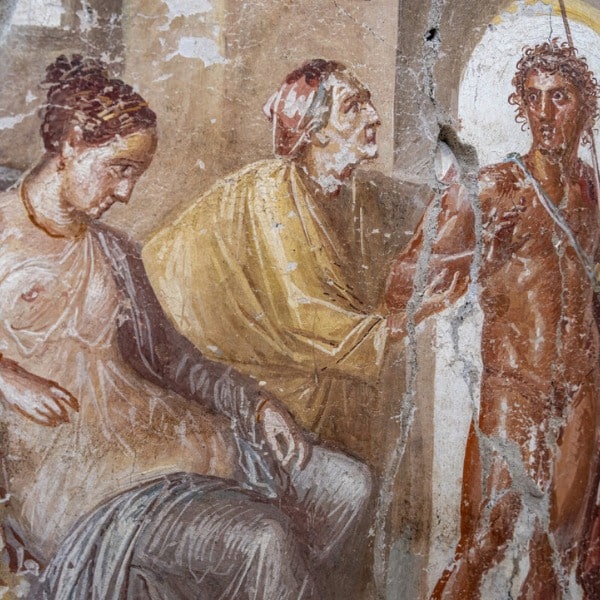View this post on Instagram
Pizza is a perfect meal—filling, flavorful, endlessly varied by toppings. This Italian delicacy has won over the world in the recent centuries of globalization, and it remains a national treasure of Italy, especially Naples. So naturally, the pizza-loving world got excited when a new discovery of a mural in Pompeii—the Italian city frozen in time by a volcano—appeared to feature what looked like a deep dish classic.
In 79 CE, ash from a nearby volcano poured down upon the Roman city of Pompeii, freezing many scenes of daily life in stone. These scenes have been excavated over the past two centuries and have taught the world a lot about ancient life, including ancient food. Work continues on the massive site. A house near a bakery has recently been excavated, producing three sets of human skeletons nearby the oven used for baking food. One item which may have been baked in a similar oven appears on the wall—the possible pizza. However, the tasty treat is in fact not pizza, which was impossible for ancient Romans to make in its modern sense. In fact, the mural depicts a kind of loaded flatbread which is a distant precursor to later bread-and-topping combinations.
Perched on a silver platter with a silver goblet of wine, the crusty dish is loaded with toppings. Though it looks exactly like a modern pizza, there are a few reasons why it can’t be the beloved meal. Firstly, tomatoes used in today's dish were not introduced to Europe until the colonization of the Americas, where tomatoes originally grew. The fresco, which was appointed 2,000 years ago, also would not likely have contained mozzarella cheese. While the Romans had similar cheeses, modern mozzarella is a more recent invention. Instead, the dish pictured on the ruin is a focaccia flatbread piled high with pomegranates and dates, topped with spices or pesto. While similar in construction to pizza, it certainly would have been a different culinary experience.
However, like pizza in its early days, the flatbread with fruit would have been a humble meal for humble folk. Pompeii director Gabriel Zuchtriegel noted the contrast between the “frugal and simple meal” and the “luxury of silver trays” within the fresco. “How can we fail to think, in this regard, of pizza, also born as a ‘poor' dish in southern Italy, which has now conquered the world and is also served in starred restaurants,” he proudly announced. So viewers may misidentify the dish as a pizza, but they are justified in recognizing a key part of Italian history.
An ancient mural of “pizza” was discovered in Pompeii, but the ancient food is not exactly the modern Italian delight. Instead, it is a precursor flatbread bedecked in fruit.
Related Articles:
Perfectly Preserved 3,000-Year-Old Bronze Sword Discovered in Germany
Researchers Discover the Earliest Recorded Kiss Was 4,500 Years Ago
‘Vesuvius Challenge’ Will Pay Up to $1M to Whoever Can Decipher Charred Scrolls From Pompeii
Scientists Successfully Sequence the DNA of Man From the Pompeii Eruption for the First Time






















































































